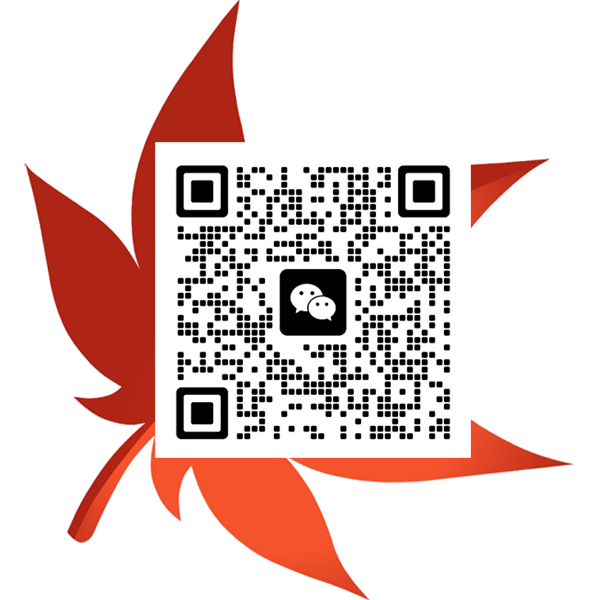详情介绍
中文
31110 – 牙医
牙医诊断、治疗、预防和控制牙齿和口腔的疾病。他们在私人诊所工作,或受雇于医院、诊所、公共卫生机构或大学。
标题索引
- 牙科医生
- 牙医
- 牙科外科医生
- 牙髓病医生
- 全科牙医
- 种植牙专家 - 牙科
- 口腔和牙科外科医生
- 口腔颌面外科医生
- 口腔医学专家
- 口腔病理学家
- 口腔病理及颌面外科专家
- 口腔放射科医师
- 口腔外科医生
- 牙齿矫正医生
- 儿科牙医
- 儿科医师
- 牙周病医生
- 口腔修复师
- 公共卫生牙医
- 口腔科医生
主要职责
该小组履行以下部分或全部职责:
牙医
- 检查患者的牙齿、牙龈和周围组织,以诊断疾病、损伤和腐烂,并制定适当的预防或矫正治疗
- 提供一般牙科护理,例如清洁牙齿、填充蛀牙、进行根管治疗、贴贴面以及安装牙冠、牙桥和假牙
- 修复、拔除和更换患病和腐烂的牙齿
- 指导患者口腔卫生和预防性牙齿护理
- 监测患者的进展以确定牙科疾病的变化或进展
- 根据需要开抗生素或其他药物
- 漂白、清洁或抛光牙齿以恢复自然颜色
- 根据推荐程序的需要,将患者转介给牙科专家
- 监督牙科保健员、牙科助理和其他工作人员
- 可以提供基本的正畸治疗和额外的培训。
口腔颌面外科医生
- 与其他专业人士合作,例如修复牙医和牙齿矫正医生,以规划治疗
- 进行全身麻醉和局部麻醉
- 进行手术,为种植牙做口腔准备,或帮助有缺陷的骨骼和牙龈组织再生
- 去除受影响的、损坏的和不可修复的牙齿,以及口腔和面部区域的肿瘤和其他异常生长物
- 对口腔和下颌进行手术以治疗唇裂、上颚和下颌生长问题等疾病
- 提供面部损伤的紧急处理,包括面部撕裂伤、口腔内撕裂伤和面部骨折
- 治疗口腔、唾液腺、颌骨和颈部的感染。
牙齿矫正医生
- 检查患者的牙齿、牙龈和周围组织,以评估颌骨发育、牙齿位置和其他牙面部结构的异常情况
- 诊断牙齿和下巴或其他牙面部异常
- 针对反咬合、覆咬合、拥挤等情况提出治疗计划
- 设计和制造器具,例如间隙保持器、保持器以及唇舌弓丝
- 在患者口中安装牙科器具以改变牙齿和颌骨的位置和关系或重新排列牙齿
- 与其他牙科和医疗专业人员协调正畸服务
- 教育患者改善和维持正畸护理,并促进常规牙科保健。
修复医生
- 检查患者的牙齿、牙龈和颌骨以诊断疾病、损伤和蛀牙,并制定适当的治疗方案以增强患者的牙齿和面部美学,或矫正口腔问题
- 用永久固定装置(例如种植体支持的假牙、牙冠和牙桥)或可移动固定装置(例如假牙)替换缺失的牙齿和相关口腔结构
- 为外伤患者或患有疾病或先天缺陷的人恢复功能并改善美观
- 设计和制造假牙,或监督制造设备的牙科技师
- 为患者安装假肢,进行任何必要的调整和修改
- 使用填充物、贴面和牙冠等材料修复受损的牙齿
- 与普通牙医、牙科专家和其他卫生专业人员合作,制定解决牙齿和口腔健康问题的方法。
就业要求
-
牙医
- 需要两到四年的牙科大学预科学习,或者在魁北克,需要完成理科大学课程和获得认可的牙科课程的大学学位。
- 需要获得省或地区监管机构的许可。
- 一般实践中的牙医可以通过高级培训进入专业实践。
-
口腔颌面外科医生
- 需要四到七年的口腔颌面外科专业住院医师培训。
-
牙齿矫正医生
- 需要经过加拿大牙医协会认可的三年高级正畸学和牙面矫形学课程。
-
修复医生
- 需要加拿大牙科协会认可的三年高级口腔修复学课程。
附加信息
- 加拿大国家牙科考试委员会的认证使牙医或经批准的牙科课程的毕业生有权在加拿大任何省份从事牙科工作,前提是满足省和地区许可当局规定的要求。
- 牙医经过进一步的教育、培训和许可,可以在口腔颌面外科、口腔正畸学、儿科牙科、牙周病学、牙髓病学、口腔修复学、口腔病理学、口腔放射学或公共卫生牙科等领域进行专业和实践。
排除
- 牙科助理和牙科实验室助理(33100)
- 牙科保健员和牙科治疗师(32111)
- 牙科技师和技师 ( 32112)
- 牙医 ( 32110 )
English
31110 – Dentists
Dentists diagnose, treat, prevent and control disorders of the teeth and mouth. They work in private practice or may be employed in hospitals, clinics, public health facilities or universities.
Index of titles
- Dental surgeon
- Dentist
- Doctor of dental surgery
- Endodontist
- General practice dentist
- Implantologist - dentistry
- Oral and dental surgeon
- Oral and maxillofacial surgeon
- Oral medicine specialist
- Oral pathologist
- Oral pathology and maxillofacial surgery specialist
- Oral radiologist
- Oral surgeon
- Orthodontist
- Pediatric dentist
- Pedodontist
- Periodontist
- Prosthodontist
- Public health dentist
- Stomatologist
Main duties
This group performs some or all of the following duties:
Dentists
- Examine patients' teeth, gums and surrounding tissue to diagnose disease, injury and decay and plan appropriate preventive or corrective treatment
- Provide general dental care such as cleaning teeth, filling cavities, performing root canals, applying veneers, and fitting crowns, bridges and dentures
- Restore, extract and replace diseased and decayed teeth
- Instruct patients on oral hygiene and preventive dental care
- Monitor patient progress to identify changes or the progression of dental disease
- Prescribe antibiotics or other medication as required
- Bleach, clean, or polish teeth to restore natural color
- Refer patients to dental specialists as needed for recommended procedures
- Supervise dental hygienists, dental assistants and other staff
- May provide basic orthodontic treatments with additional training.
Oral and maxillofacial surgeons
- Collaborate with other professionals, such as restorative dentists and orthodontists, to plan treatment
- Administer general and local anesthetics
- Perform surgery to prepare the mouth for dental implants orto aid in the regeneration of deficient bone and gum tissues
- Remove impacted, damaged, and non-restorable teeth, as well as tumors and other abnormal growths of the oral and facial regions
- Perform surgery on the mouth and jaws to treat conditions, such as cleft lip, palate, and jaw growth problems
- Provide emergency treatment of facial injuries including facial lacerations, intra-oral lacerations, and fractured facial bones
- Treat infections of the oral cavity, salivary glands, jaws, and neck.
Orthodontists
- Examine patients' teeth, gums and surrounding tissue to assess abnormalities of jaw development, tooth position, and other dental-facial structures
- Diagnose teeth and jaw or other dental-facial abnormalities
- Propose treatment plan for conditions such as underbites, overbites, crowding and others
- Design and fabricate appliances, such as space maintainers, retainers, and labial and lingual arch wires
- Fit dental appliances in patients' mouths to alter the position and relationship of teeth and jaws or to realign teeth
- Coordinate orthodontic services with other dental and medical professionals
- Educate patients about improving and maintaining orthodontic care, and promoting routine dental health care.
Prosthodontists
- Examine patient’s teeth, gums and jaws to diagnose disease, injury and decay, and plan appropriate treatment to enhance patients’ dental and facial aesthetics, or correct orofacial problems
- Replace missing teeth and associated oral structures with permanent fixtures, such as implant-supported prostheses, crowns and bridges, or removable fixtures, such as dentures
- Restore function and improve aesthetics for traumatic injury victims, or individuals with diseases or birth defects
- Design and fabricate dental prostheses, or supervise dental technicians who construct the devices
- Fit prostheses to patients, making any necessary adjustments and modifications
- Restore damaged teeth with materials such as fillings, veneers and crowns
- Collaborate with general dentists, dental specialists, and other health professionals to develop solutions to dental and oral health concerns.
Employment requirements
-
Dentists
- Two to four years of pre-dentistry university studies or, in Quebec, completion of a college program in sciences and a university degree from a recognized dental program are required.
- Licensing by a provincial or territorial regulatory body is required.
- Dentists in general practice can move into a specialized practice through advanced training.
-
Oral and maxillofacial surgeons
- Four to seven years of specialty residency training in oral and maxillofacial surgery are required.
-
Orthodontists
- Three years advanced orthodontics and dentofacial orthopedics program accredited by the Canadian Dental Association is required.
-
Prosthodontists
- Three years advanced prosthodontics program accredited by the Canadian Dental Association is required.
Additional information
- Certification by the National Dental Examining Board of Canada entitles dentists or graduates of approved dental programs to practise dentistry in any province in Canada provided requirements set out by the provincial and territorial licensing authorities are met.
- Dentists, with further education, training and licensing, can specialize and practice in such areas as oral and maxillofacial surgery, orthodontics, pediatric dentistry, periodontics, endodontics, prosthodontics, oral pathology, oral radiology or public health dentistry.
Exclusions
- Dental assistants and dental laboratory assistants (33100)
- Dental hygienists and dental therapists (32111)
- Dental technologists and technicians (32112)
- Denturists (32110)

